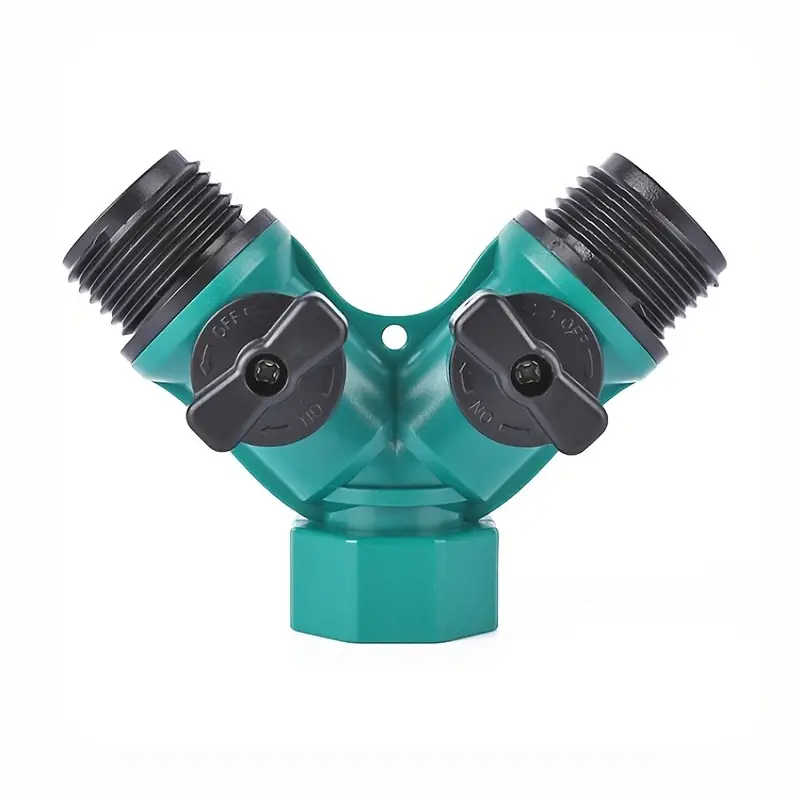Joewalla88
Well-Known Member
I want to connect my smaller wort chiller to my other wort chiller to make one bigger wort chiller. Would this be a dumb idea, and what would be a good way to connect them?

Oh duh, a 25' and 50'x3/8" immersion chillers I think.What type(s) of chillers?
Cheers!
I think I'm overcomplicating this in my head, and am now a little embarrassed for asking the question. I can just run my hose to a splitter and hook both chillers up at the same time. My idea was to tighten up the coil on the small chill and stick it inside the bigger chiller. Would that work? Am I missing anything?Ok, offhand, if they can both fit in your kettle and your cooling water runs below say 68°F the options would be to connect them either in series or parallel. I suspect a parallel connection would work faster at the expense of more complicated plumbing as you'd need a splitter and extra fill and drain hoses...
Cheers!

I was thinking the same thing. pretty easy to set up and I think would be much more efficientAnother option to get more “chill” is to make the smaller one a pre-chiller. I put one in a small bucket of water and frozen jugs of water. My garden hose connects to this one first; the water gets pre-chilled and then on to the immersion chiller in my brew kettle. This makes a much cooler input temperature to my IC than what comes out the tap.

That part there is probably the key; With coil length there is a point of diminishing returns which I did not study fully while I still had an IC (I ended up turing it into a CFC). Sorry for the lack of specific time/temp here; but I recall that [with 3/8" tubing] in the first few minutes, by the time the coolant water has progressed about 10', it has already reached equilibriulm...it takes several minutes more before the wort temp has dropped to the point that it can make it 15'-18', and much longer than that before you can think about pitching temp.I only pre-chill toward the end of the chilling procedure to drop the domestic water temps from 55-70F down to 40s. It works, but not great, the flow must be reduced to a small stream (read: a fast trickle) to get any decent chilling efficiency.
That's what I might do. Try both, see which works best. My temp coming out of the tap is cold enough, I just want it to go faster still. I never thought of the prechill idea though. That's smart.You're getting good answers, but in 2 directions; ... Are you using tap-water to cool? What is the temp of your tap-water? Mine is 58°, but as I use a CFC, that's perfectly adequate for using as-is. Your groundwater temp may or may not be suited to the speed at which you want to chill and I suspect for half the homebrewers using immersion chillers, it's not cold enough..in which case, a second IC is thrown into a vessel full of ice-water and run in series with the IC in the wort... If however, 2 parallel IC's have enough motion of wort for effective heat-exchange at the groundwater temp you have, that might be more effective.
My suggestion would be to try a batch with them in parallel and constantly stirring or pumping the wort over them, and if you feel it is too slow, then get a basin (could be a picnic cooler wether or not it's been turned into a mash-tun), fill it with ice and put one IC in that, connected in series and try again. As those are pretty much your 2 options, try both.

is that one coil will not chill as efficiently as the other

This is kinda what I was thinking. Thanks for the pic.I have a NY Homebrew 50' 1/2" I.D. chiller that I augmented with my Anvil immersion chiller which fits right inside the coil of the NY Homebrew chiller. So I added more surface area just by connecting the two together. One input split which then returns to one output. Snow in Texas... The setup worked well that day!
Enter your email address to join: